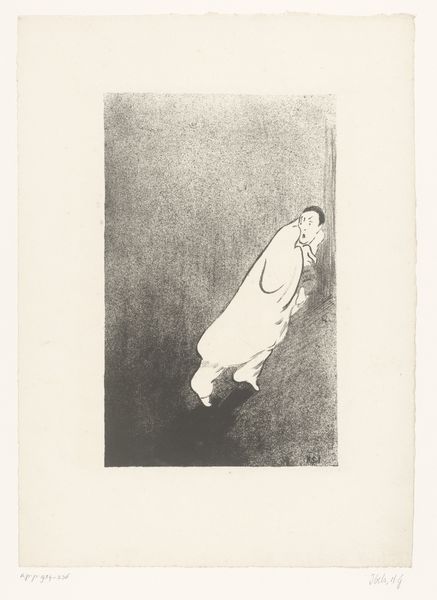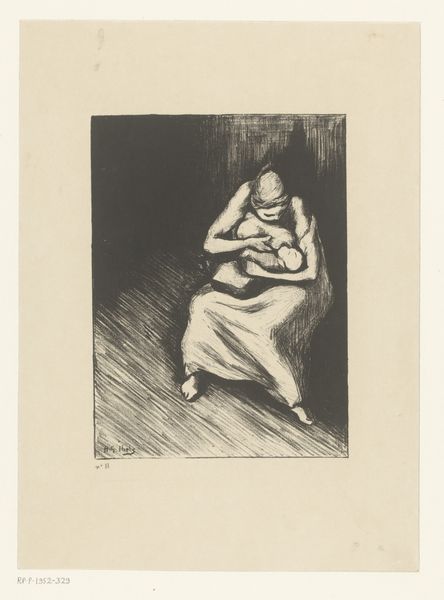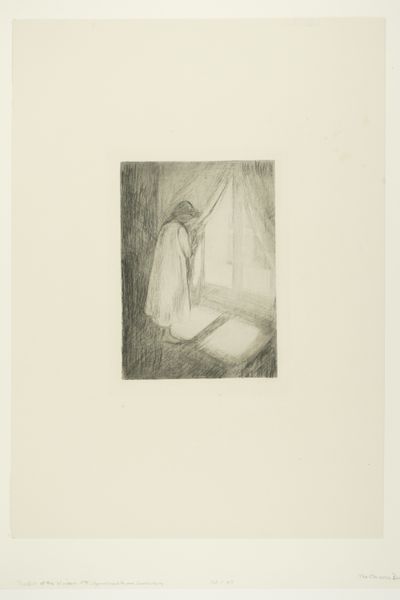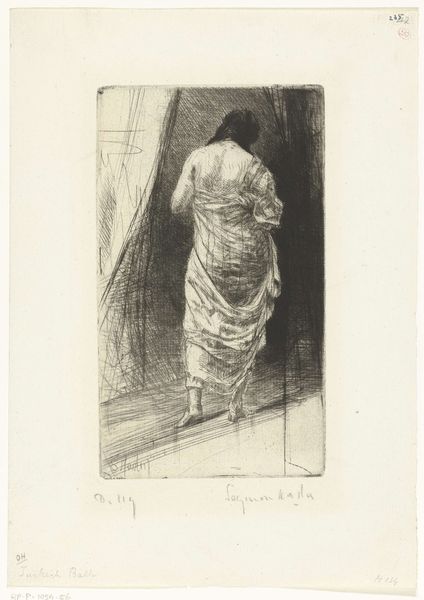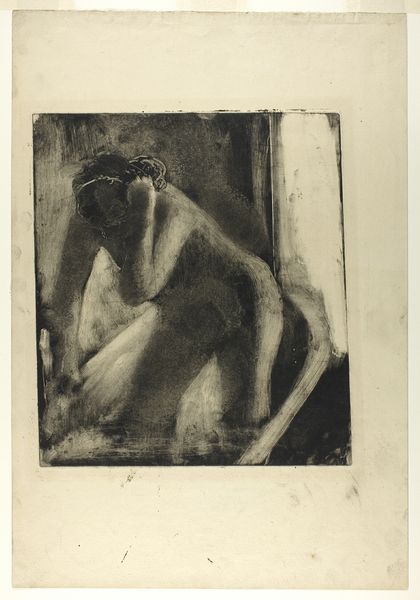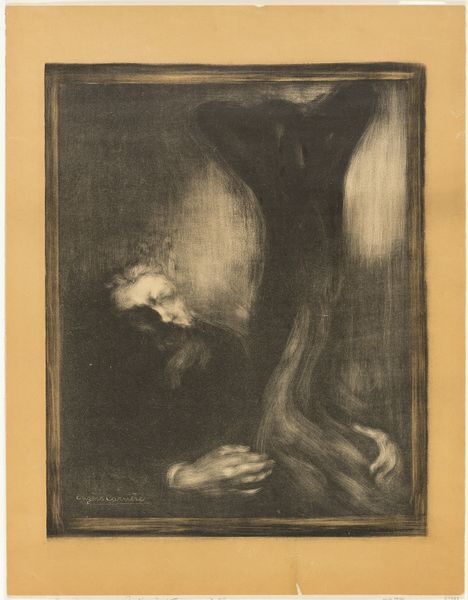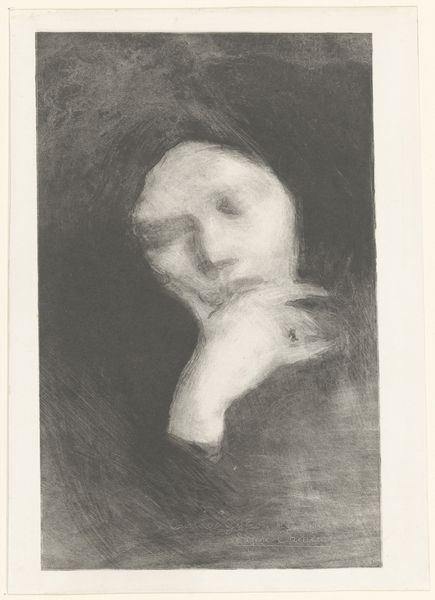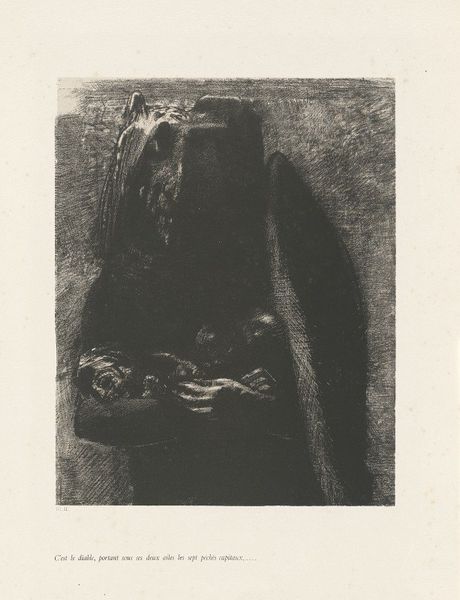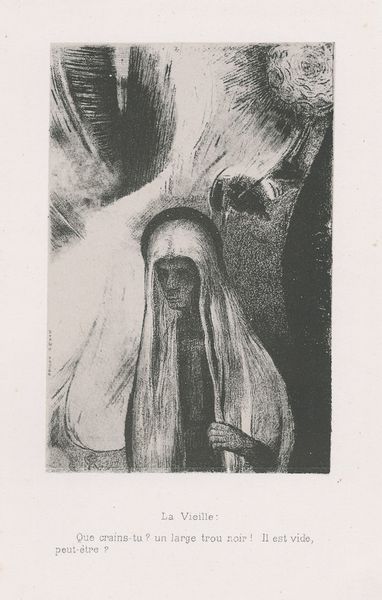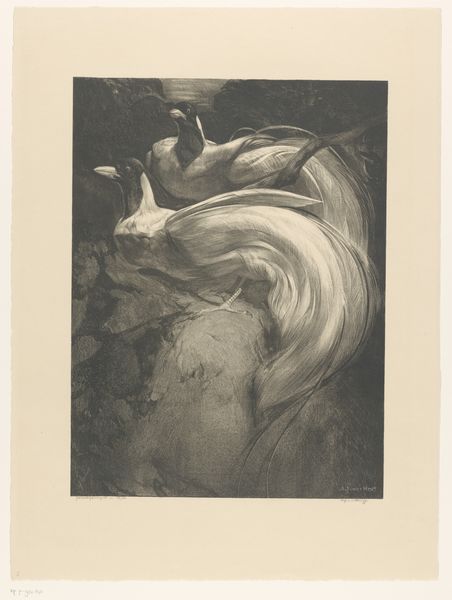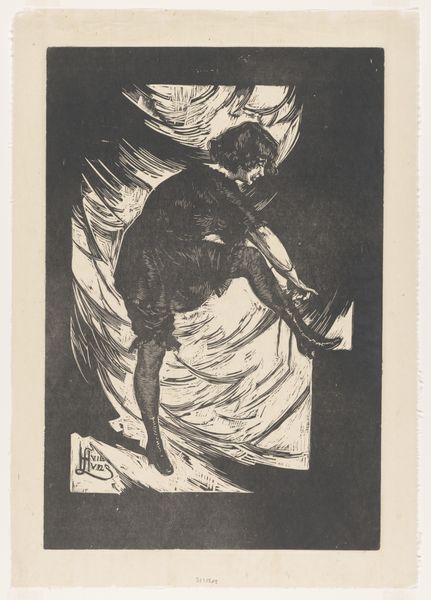
Dimensions: height 236 mm, width 191 mm
Copyright: Rijks Museum: Open Domain
Hein von Essen made this print, De Dood, using a technique called etching. This process involves drawing with a sharp needle on a wax-coated metal plate, which is then submerged in acid. The acid bites into the exposed lines, creating grooves that hold ink. Von Essen uses the intrinsic nature of the etched line to create the shadowy ethereal figure of Death. Notice the tonal range in the print, from the dark background to the ghostly figure in the foreground. This tonal range adds depth and volume to the work, and is achieved by carefully controlling the amount of time the plate is exposed to the acid. The etching process, with its reliance on skilled labor and specialized tools, has a long history, bridging craft and fine art. Von Essen engages with these traditions, while at the same time pushing the boundaries of what printmaking can achieve, using it as a means of exploring complex themes. Materials, making, and context are all crucial to understanding the full meaning of this work.
Comments
No comments
Be the first to comment and join the conversation on the ultimate creative platform.
